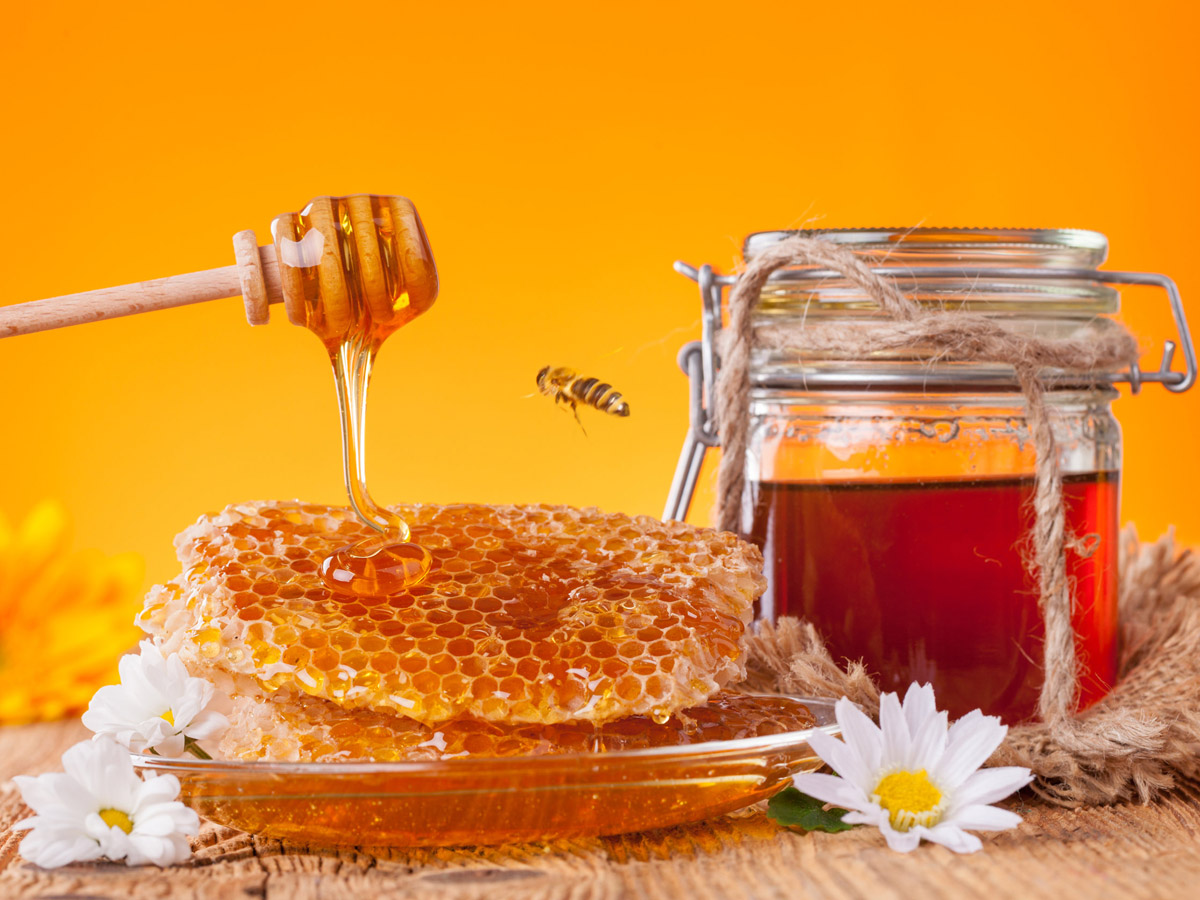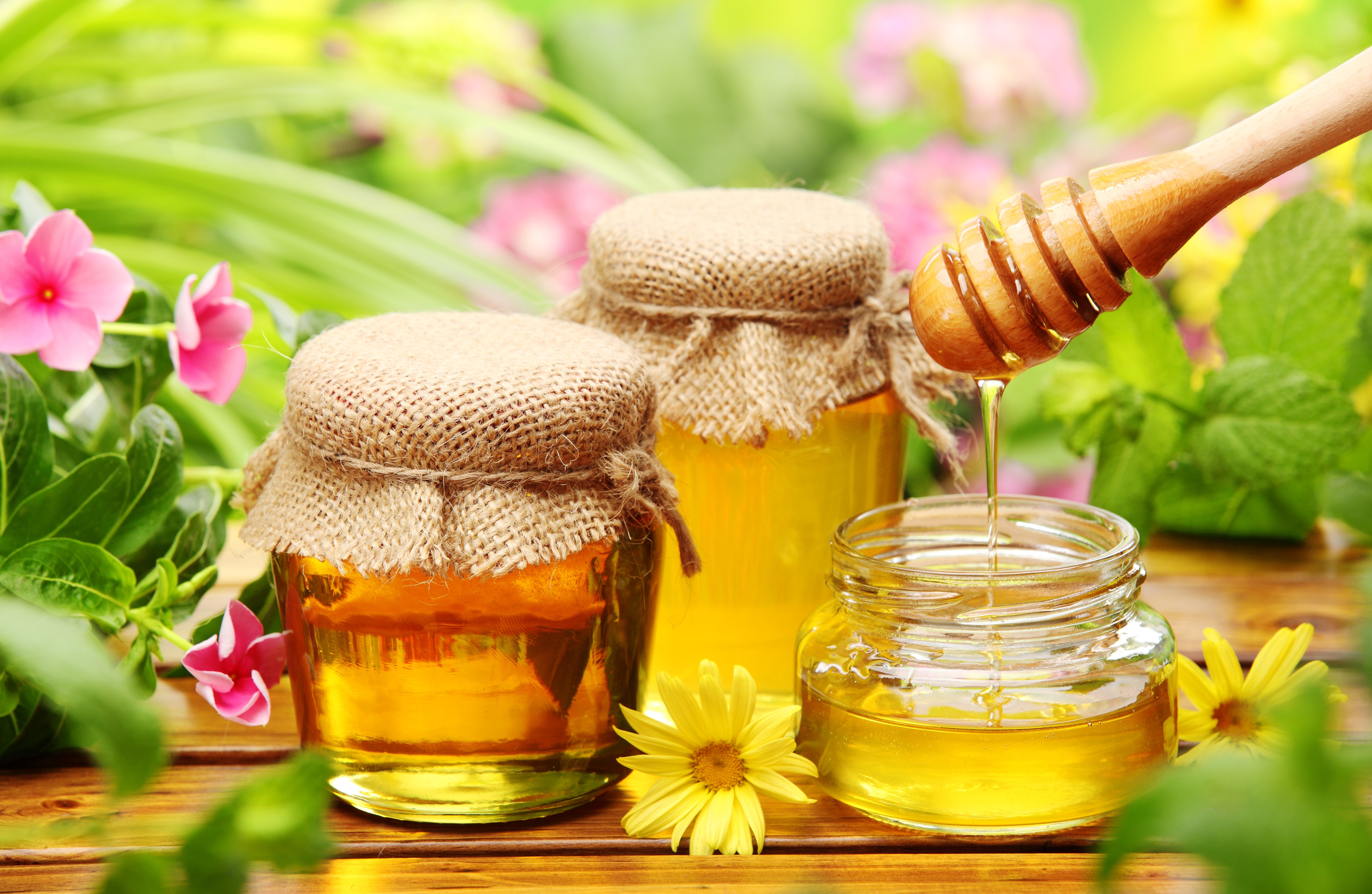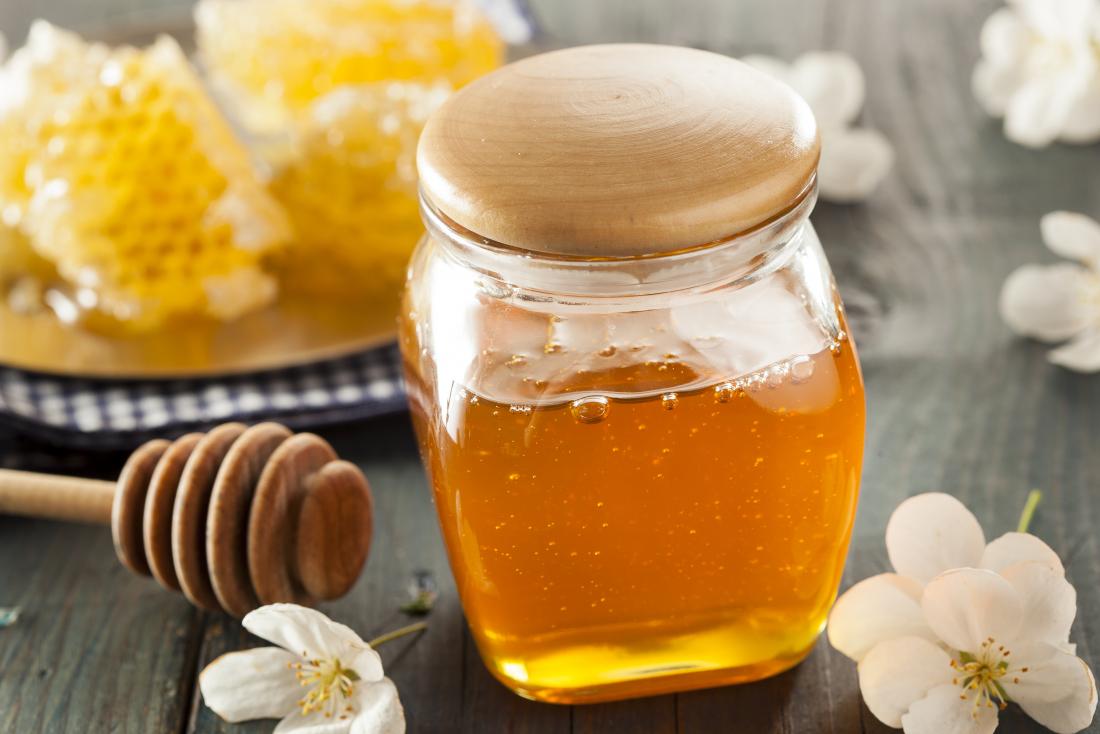Who Is Honey Hollman Mother - A Look Into Honey's Nature
There's a lot of talk these days about different things, and sometimes a question pops up that makes you pause and wonder, is that really what it means? When we hear about "who is Honey Hollman mother," it's natural to feel a little curious, maybe even a bit intrigued by what this might truly imply. We often think of mothers as sources of life, of care, and of beginnings, so too it's almost a way to think about where things come from, where they get their start, or what nurtures them into being.
This particular phrase, you see, seems to point us towards something quite special, something that has been around for ages, offering comfort and sweetness to people all over the globe. It makes us consider the origins, the very essence of something that gives so much. It's a way of looking at the natural world, and the remarkable ways things are created and cared for, which is that a very interesting idea to think about, isn't it?
So, in our exploration, we're not just looking for a simple answer. Instead, we're going to consider the deeper connections, the nurturing aspects, and the very core of what makes something as wonderful as honey what it is. We'll explore its characteristics, its gentle ways, and how it is brought into our lives, kind of like understanding the source or the guardian of something truly valuable. We’ll be looking at the true nature of this golden goodness.
Table of Contents
- Understanding Honey's Gentle Side - Who is Honey Hollman Mother of Comfort?
- Safeguarding the Young Ones - How Does the Mother of Honey Protect?
- Honey and the Body - How Does Honey Hollman Mother Affect Our Systems?
- The Sweetness Factor - What Makes Honey Hollman Mother So Unique?
- The Craft of Honey Making - What Does Honey Hollman Mother Teach Us About Production?
- The True State of Honey - What Does Honey Hollman Mother Reveal About Its Condition?
- The Community Behind the Sweetness - Who Supports Honey Hollman Mother?
- When Is Honey Ready for Its Journey - What Does Honey Hollman Mother Signal?
Understanding Honey's Gentle Side - Who is Honey Hollman Mother of Comfort?
Honey, as a natural offering, appears to be a good choice for a variety of uses. It can be a natural sweetener, giving a pleasant taste to foods and drinks without needing anything artificial. It's also often considered a soothing aid for scratchy throats, acting like a balm when you're feeling under the weather. Furthermore, you know, it can be put on small scrapes and cuts, providing a covering for minor skin issues. This adaptability, this way it helps in different situations, really speaks to its comforting qualities, almost like a kind and nurturing presence in our homes.
The way honey works its magic, whether it's calming a cough or helping a small wound, is quite fascinating. It holds a natural goodness that many people appreciate. It's not just about its taste; it’s also about the gentle way it interacts with our bodies, offering a sense of well-being. This versatility means it can be a staple in the kitchen and a go-to item in the medicine cabinet, which is that a very handy thing to have around, honestly.
Consider how it provides a natural sweetness, replacing processed sugars in many dishes. This makes it a favored choice for those looking for more wholesome alternatives. And for those nights when a cough just won't let up, a spoonful of honey can provide a moment of peace, allowing for a bit of rest. Its ability to offer comfort in these different ways really highlights its role as a gentle helper, a soothing presence, almost like a caring touch, you know, when you need it most.
Safeguarding the Young Ones - How Does the Mother of Honey Protect?
When it comes to the very young, there's a special caution we need to observe with honey. It is very important to avoid giving honey, even a tiny taste, to infants who are under one year of age. This protective measure is taken because their developing bodies are still quite delicate and not yet ready to handle certain natural elements that honey might contain. It's a way of keeping them safe, making sure they grow strong before introducing everything into their diet.
This careful approach for the youngest members of our families is a crucial piece of knowledge. It highlights the need for specific guidance when it comes to what our little ones consume. The well-being of a child is paramount, and understanding these age-related recommendations helps ensure their proper growth and health. It’s a bit like how a caring guardian would always check what’s best for their child, making sure everything is just right for them, too it's almost a universal rule of good care.
However, once children reach their first birthday, the situation changes quite a bit. For children aged one year and older, honey can actually be given in small amounts to help with a cough. A quantity of about half a teaspoon to a full teaspoon, which is roughly 2.5 to 5 milliliters, can be administered. Since honey is generally considered safe for those over twelve months old, it might be something worth trying if a cough is bothering them. This shows a progression, a readiness that comes with age, allowing them to benefit from honey's comforting properties when they are prepared for it, in a way, it's a gradual introduction to its goodness.
Honey and the Body - How Does Honey Hollman Mother Affect Our Systems?
When we talk about how honey interacts with our internal workings, especially concerning our body's sugar management, it's worth noting a key point. Both honey and regular table sugar, the kind you typically find in your pantry, will have an impact on your blood sugar levels. They are both forms of sugar, after all, and our bodies process them in ways that cause a rise in the amount of sugar circulating in our blood. This is a pretty straightforward fact about how these sweet things work inside us, so, you know, it’s good to be aware.
However, there's a subtle difference to keep in mind when considering honey versus granulated sugar. Honey is, in fact, sweeter than the standard white sugar you might be used to. This means that when you are preparing food or drinks, you might find yourself using a smaller quantity of honey to achieve the same level of sweetness that you would with a larger amount of sugar. This difference in sweetness can influence how much you add to your recipes, potentially leading to a slight adjustment in your overall sugar intake if you switch from one to the other. It's a little trick of nature, really, that something so potent can come in a smaller package.
Understanding this distinction is helpful for anyone who pays attention to their sugar consumption or who simply enjoys cooking and baking. Knowing that a little honey goes a long way can help in making choices about ingredients. It’s not just about the taste; it’s also about the concentration of that sweetness. This characteristic of honey makes it a unique ingredient, offering a powerful flavor in a more compact form, which is that a very interesting aspect to consider when you’re thinking about your diet, actually.
The Sweetness Factor - What Makes Honey Hollman Mother So Unique?
Exploring the distinctive qualities of honey, especially when it comes to its origins and the care it receives, brings us to the tools and methods used in its preparation. There's a particular product, for instance, called Honey Bandit from Mann Lake, that some people find quite effective. When individuals start using something like this, they often discover that they really appreciate its performance. It’s about finding what works well in the practical steps of handling honey, which is just a little bit like finding the right way to care for something precious.
One of the appealing aspects of this specific product, or similar ones used in the honey world, is that it doesn't carry an unpleasant odor. This is a significant plus, as nobody wants something that smells bad around food products. The absence of a disagreeable scent makes the process of working with honey much more pleasant for those involved. Moreover, it is also quite effective at what it’s supposed to do, helping in the tasks related to honey preparation. This combination of being easy on the nose and getting the job done makes it a favored choice among those who work with honey, you know, in a practical sense.
This attention to detail in the tools and supplies used for honey speaks to the overall commitment to quality and care in the honey-making process. Just as a mother nurtures her child, those who work with honey strive to use the best methods and products to ensure the honey is handled well. It reflects a dedication to maintaining the purity and goodness of the honey from its earliest stages to its final presentation. It's about making the process as good as the product itself, which is that a pretty important thing, honestly.
The Craft of Honey Making - What Does Honey Hollman Mother Teach Us About Production?
When it comes to the actual work of preparing honey for consumption, there's a lot to learn about practical space management. It’s one thing to sketch out ideas on paper, even if those plans seem quite complete and thought through. However, I can completely confirm that those well-considered plans often feel very tight and limited when you begin to physically construct the area needed for honey processing. The reality of building the space can be quite different from the drawing board, which is just a little bit of a common challenge in any hands-on project, actually.
This experience highlights a key lesson in the craft of honey production: the need for adaptable planning. What looks spacious enough in a drawing can quickly become cramped when equipment is moved in, and work begins. This means that those involved in honey processing need to be flexible and ready to adjust their setups as they go. It’s a process of learning by doing, and making sure the physical environment supports the flow of work, kind of like ensuring a comfortable home for a growing family, in a way.
As the seasons change and spring arrives, those tending to honey often find something interesting in their hives. You might observe that you have several frames filled with honey in the upper section of each deep hive body. This is a sign of successful activity within the hive, showing that the bees have been busy gathering and storing their sweet creation. Often, this newly found honey might be mixed with some uncapped honey, meaning some cells are still open and not yet sealed by the bees. This mixed state is a common sight and presents the next question for the honey keeper, so, you know, it’s part of the natural cycle.
The True State of Honey - What Does Honey Hollman Mother Reveal About Its Condition?
Upon inspecting the honey, especially from different parts of a frame or container, you might notice some interesting variations in its condition. The honey found at the top, for example, might have a light taste, but surprisingly, it could carry a sour smell. Despite this scent, it often pours quite easily, indicating a thinner consistency. This suggests that the honey in this section might have different characteristics due to its position or how it was stored, which is that a very common occurrence in honey production.
In contrast, the honey located at the bottom often tastes like typical honey, but its appearance can be quite different. It might look as if it has turned solid, or "crystallized." When honey reaches this state, it simply won't flow, even when the surrounding temperature is quite warm, perhaps as high as 95 degrees Fahrenheit. This solid form is a natural process for honey and doesn't necessarily mean it's gone bad, but it does affect how it can be used or extracted. It's a clear sign of its natural tendencies, actually, to change form.
Further examination of honey cells can reveal more about their condition. Sometimes, the open honey cells, those not yet sealed by the bees, can be completely dry. This indicates that the nectar has fully dried out and is ready. On the other hand, cells that have been sealed, or "capped," might surprisingly contain honey with a water content that is too high. This happens when bees seal the cells too quickly during periods of very heavy nectar flow. They might cap the cells before all the excess water has evaporated, leading to a less dense honey. This shows that even with their best efforts, nature sometimes works at its own pace, and the bees are very efficient, sometimes too efficient, in their work.
The Community Behind the Sweetness - Who Supports Honey Hollman Mother?
The world of honey production is truly a diverse mix of people, each bringing their own approach and knowledge. You have a wide range of individuals and groups involved, creating a rich tapestry of methods and philosophies. There are the larger commercial operations, working on a big scale, alongside the sideliners, who produce honey as a significant side activity. Then there are the brand new beekeepers, just starting their journey, eager to learn the ropes. It's a very broad group of people, you know, all connected by their interest in bees and honey.
Within this community, you'll also find those who practice "treatment-free" beekeeping, choosing not to use chemical treatments in their hives. There are also groups focused on specific bee traits, like VSH (Varroa Sensitive Hygiene) bees, or those interested in "allogrooming," which is how bees help each other stay clean. You might encounter "bio technical beekeepers" who use scientific methods, and "artificial insemination groups" working on bee genetics. And then, there are those who use the byproducts, like candle makers, turning wax into beautiful items. This mix of interests and methods shows just how many different ways people connect with honey and its origins, which is that a pretty amazing thing to see.
This varied group, with all their different perspectives and practices, collectively supports the continuation and evolution of honey production. Each type of beekeeper, whether focused on large-scale production, specific bee health, or crafting related items, contributes to the overall health and vibrancy of the honey world. It’s a network of shared passion and diverse skills, all contributing to the care and perpetuation of honey, kind of like a large, extended family nurturing a precious resource. This collective effort ensures that honey continues to be available and cherished, in some respects, it’s a testament to human cooperation.
When Is Honey Ready for Its Journey - What Does Honey Hollman Mother Signal?
Knowing when honey is truly ready to be collected and processed is a key part of the beekeeping craft. If the honey in the cells has been open, or "uncapped," for a period of several weeks, it is quite likely that it has reached the right stage for extraction. This extended period of being uncapped allows the honey to properly mature and for its water content to decrease to an ideal level. It's a waiting game, really, letting nature take its course to perfect the product. This patience is a significant part of the nurturing process, so, you know, it’s not something you can rush.
The reason the honey might have remained uncapped for such a long time is often because the "honeyflow" came to an end. The honeyflow refers to the period when flowers are abundant and bees are actively gathering nectar. Once this period concludes, the bees may not have enough new nectar to cap off all the cells, leaving some open. This pause in the flow gives the honey time to dry out and concentrate naturally within the hive. It’s a natural signal from the bees and the environment that the season of intense gathering has passed, and what’s left is ready for its next step, which is that a very clear indication for beekeepers.
To be absolutely sure that the honey is ready, beekeepers often perform specific checks. These might include using a tool to measure the water content or simply observing the honey's consistency. The goal is to confirm that the honey has reached the appropriate level of moisture, making it stable for storage and consumption. This final verification step is crucial for ensuring the quality of the honey, much like a final check before sending a child out into the world, making sure everything is just right for its journey. It’s about being certain, after all the effort, that the honey is at its best, basically.

What is honey?

70+ Honey HD Wallpapers and Backgrounds

Raw honey vs. regular honey: Benefits, risks, and uses